A somewhat of a“luxurious” dwelling of our ancestors at the time.
(fig.:# 4)

Findings from the period between 600 to 800 AD reveal a Saxon dwelling near Warendorf, Westphalia (fig.:#5) --- a forerunner of the later classical farmhouse throughout Northwest Germany known as the ‘Niedersächsisches Bauernhaus‘ (Lower-Saxony farm house)
All of them had already, as still found today, one thing in-common: men and livestock under a single roof!
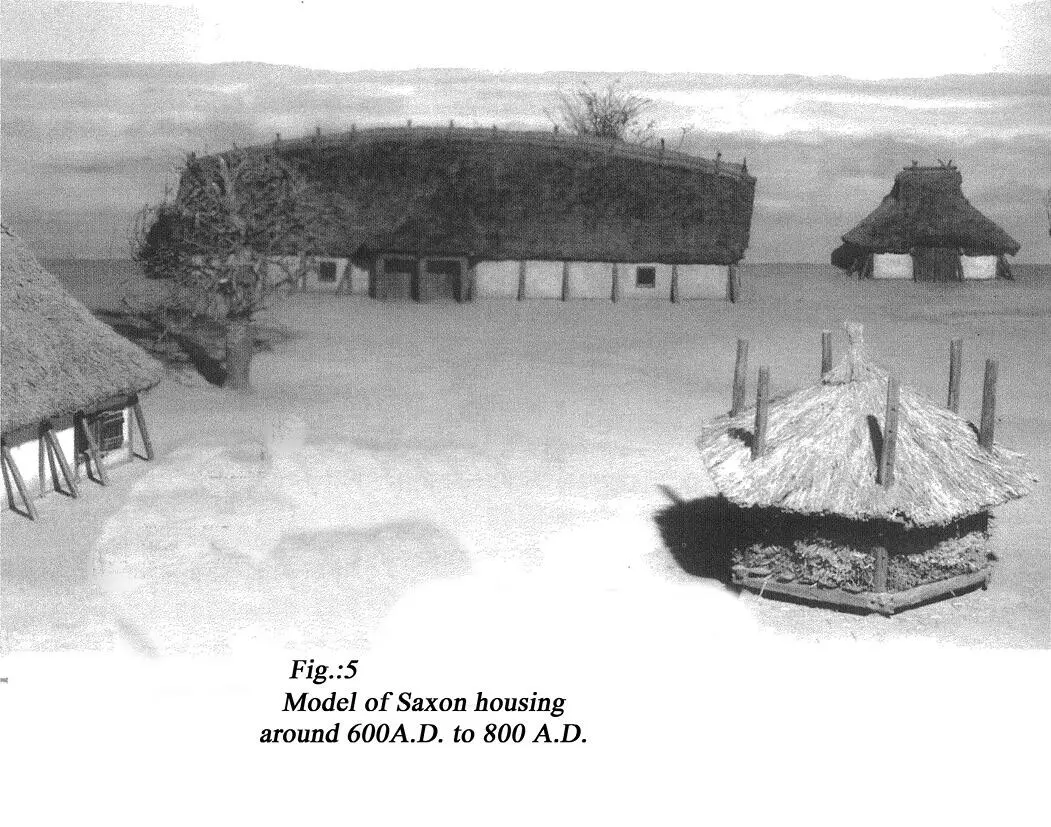
The Battle nearby at 9 A.D. with the Romans
And now let’s jump into the period when the Roman Empire was at its peak, around the birth of Christ.
It was the time when a number of independent Germanic tribes, which had settled in Europe between the Danube in the South and the North- and Baltic- Seas, and between the Rhine in the West and the Vistula (=Weichsel) in the East. It was the time when the transition began from migratory hunting and herding to agriculture and village life.
During this period of transformation, the Romans began to expand beyond their historical frontiers into just those core Germanic territories to subdue those traditional “clan” structures and their people there.
The only reliable written testimony from this period is made available by Roman writers like Tacitus. In his book “Germania”, he covers land and people of our area with particular details of the “Varus” battle from 9 AD. The actual location of the battle site has been a subject of dispute for several hundred years and was argued by many historians. (fig.: #6)
The “blue” line shows the theory of the historian Mommsen from the late 19th century. Others had different ideas, like Klostermeyer-Delbrück, Knocke, etc.
However, it took more than 100 years to give proof to Mr. Mommsen, pointing to a place named “Kalkriese” which is only a few miles away from our “Holenberg” site.
The Varus Battle near Osnabrück at 9 A.D.
between Roman Legions under Publius Quinctilius Varus
and Arminius Leading the Germanic tribes
(fig.:# 6)
It might be noted that, in the September issue of 2005, even the “Smithonian” Magazine covered this par-ticular battle rather detailed, under the title: “The Ambush that Changed History”.
The site was lost and had been argued about for over 1000 years. It was rediscovered with a simple metal detector coincidentally by Tony Clunn, a British Army officer, in 1987.
It is reported that, when the news about this bloody event reached Rome, Emperor Augustus made his rather fa-mous outcry: “Quintilius Varus! Give me my legions back”.
At that point and place, the Roman Empire lost 3 legions, amounting to an equivalent of 18000 to 20000 soldiers.
It was this particular battle, spearheaded by the Germanic tribe of the Cherusci under the leadership of their com-mander, named Arminius, which halted the spread of the Roman Empire, thus marking the turning of the tide of
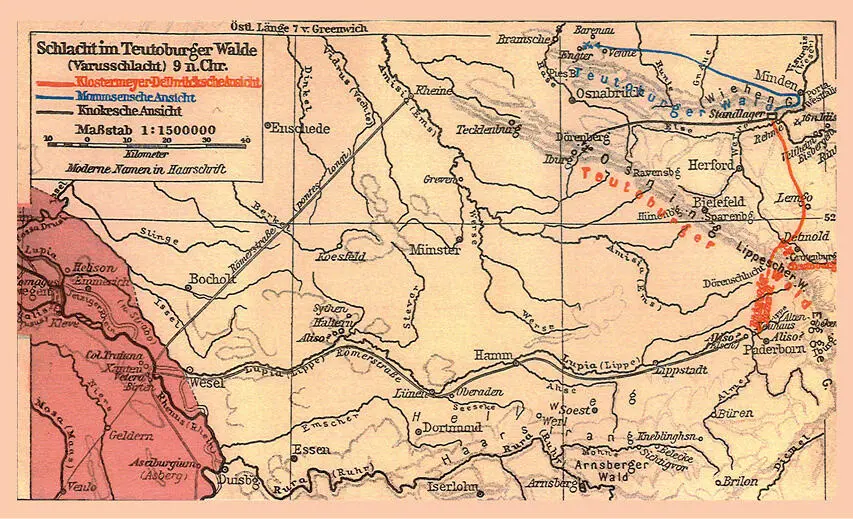
Rome’s struggle with the Germanic tribes. The defeat took place in a 360-foot-hill area where the “Teutoburger Wald” slopes down into the North-German plain.
Here is proof of a pivotal event in Central-European history, where 3 Roman crack units were annihilated.
“Nothing was more bloody than this defeat in those swamps and woods, nothing as unbearable as the insolence of those Barbarians”, Florus, a Roman reporter, wrote.
This battle took place in close proximity to Osnabrück at “Kalkriese”, within sounding distance of the living quarters of our ancestors. (fig.: #7)
Where the Romans Lost against Arminius
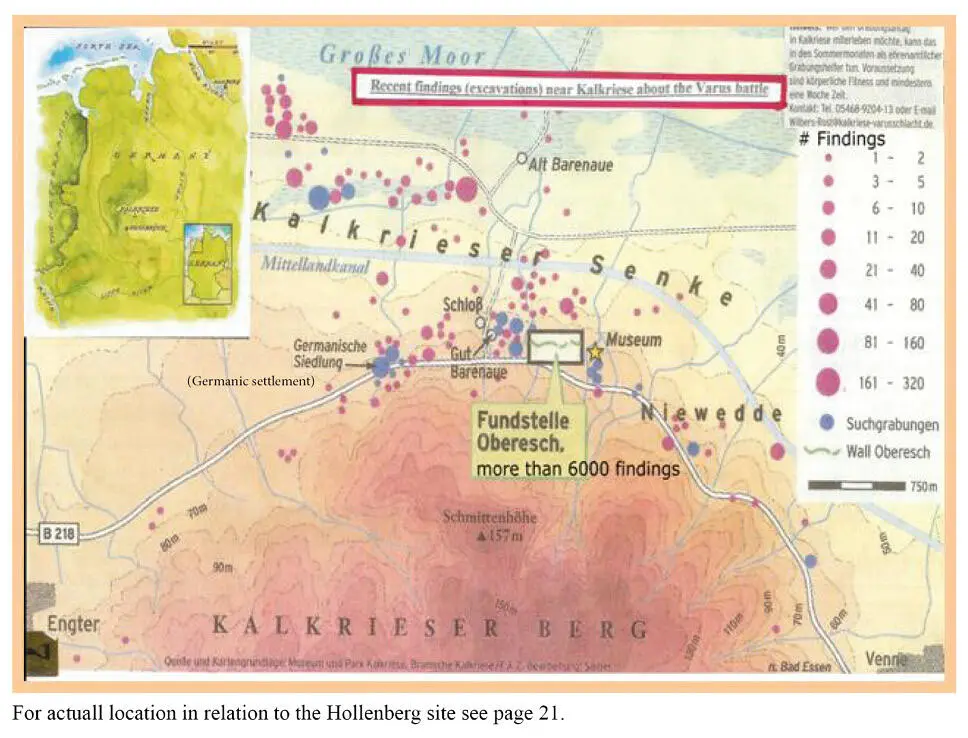
Although many historians have speculated for several hundred years about the actual site, this uncertainty has now been put to rest. Quite a few Roman writers gave different accounts and no specific details about this event. Other neutral information or descriptions from Germanic parties were not existent. However, we now have proof of the historical site.
Many artefacts were found and have been put on display, while the excavation activities are still going on.
(fig.: #8)
Yoke fittings (bronze )
- pendent of horse harness
- Part of snaffle
- strap items ( bronze )
Most of the work is currently being coordinated by the University of Osnabrück.
All in all, the old homestead is in a territory rich in culture and full of historical events.
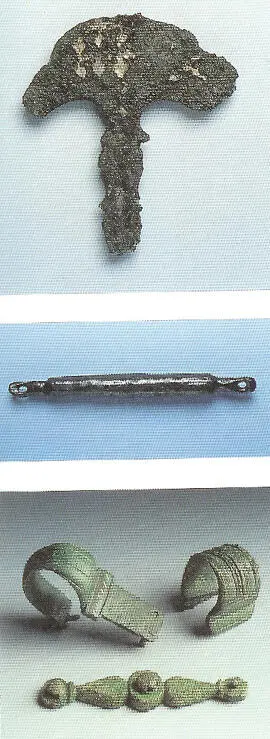
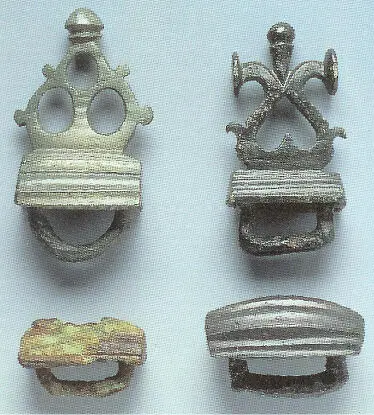
A few years would pass before Germanicus ordered around 14-16 AD another Roman army to the former battle field. He ordered 6 legions (twice the size of the Varus force) into the area to restore Roman military honour, to pursue the Germanic tribes still under the leadership of Arminius, and to bury the human remains of the earlier battle.
However, the whole campaign did not give him the upper hand over his enemies.
Germanicus was no match for the agile tactics of his opponent Arminius in any of the numerous skirmishes.
After several bloody clashes, he decided to withdraw to the Rhine-Valley.
Towards the end of 16 AD, the new Emperor Tiberius recalled Germanicus. The fortifications of the “Limes” along the Rhine-Valley were to be the northern points of Roman military activities.
This all resulted in abdicating the plans of the Empire to conquer German territory, and instead created a milita-rized buffer zone, the “Limes”, between the Germanic and Latin cultures that lasted for about 2000 years. (fig.:#9)
The tremendous burden on the Treasury and the bloodshed on the northern frontier had been too much for the Empire.
The defeat was so catastrophic that it threatened the survival of Rome itself, halted the Empire’s conquest of Germany and set the course of history for Central Europe.
Just imagine the alternative: If the Romans had won, the Anglo-Saxons, being subdued, would have learned Latin and might not have gone to England a few hundred years later??
And imagine even further that descendents of those Anglo-Saxons turned up in 1607 AD in Jamestown to lay down the foundations for man’s most modern civilization.
The Campaign of the Roman Leader Germanicus against Germanic Tribes
14 A.D. until 16. A.D. – and the Roman Limes
(fig.: #9)

The Saxons in Westphalia
It is historically proven, that a little later the Germanic tribe of the Saxons settled in our area, covering all the territory of Westphalia, Engern and Holland.
Europe during the Migration of Nations ( around 500A.D.)
Читать дальше



















